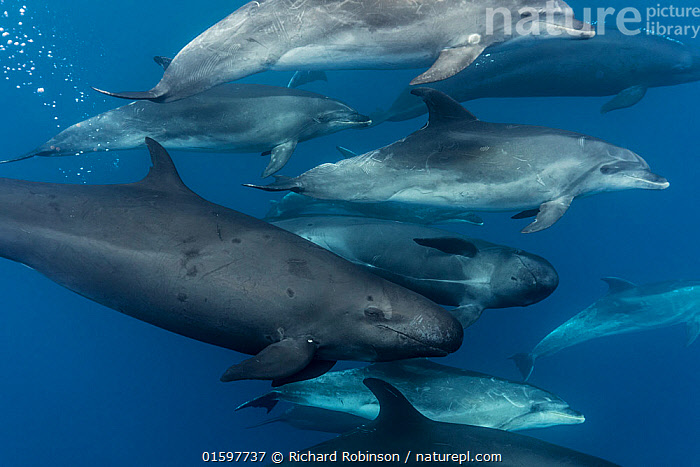|
|
Post by Exalt on Feb 3, 2024 7:40:03 GMT 5
How necessary/beneficial are large animals for ecosystems?
|
|
|
|
Post by Infinity Blade on Feb 5, 2024 17:29:03 GMT 5
How necessary/beneficial are large animals for ecosystems? Places with comparatively few if any large animals do exist. Island ecosystems come to mind, as do places in Western countries where a lot of the local fauna has been wiped out (where I live, for instance, the largest animal around is arguably the white-tailed deer, although it's highly questionable how healthy the ecosystem is). Large animals can certainly be important keystone species, though. Here's one example.  |
|
|
|
Post by Exalt on Feb 5, 2024 21:39:23 GMT 5
I guess what I'm going for here is that long term, it feels like being small is the way to survive, as a species, so I was pondering bigger picture benefits.
|
|
|
|
Post by Infinity Blade on Feb 6, 2024 4:03:18 GMT 5
I guess what I'm going for here is that long term, it feels like being small is the way to survive, as a species, so I was pondering bigger picture benefits. Well, that makes sense. Smaller animals need less food, can take shelter better, are more common, and often reproduce at quick rates. So at any given moment, even if there aren't any big animals around, you can get on there still being small animals (think the aftermath of the K-Pg). But then some of those small animals evolve to become large, and those large animals can provide benefits to other lifeforms in the ecosystem. The big picture benefit is really to the benefit of the animals that grow large (because being large is evidently useful to them). The benefits they then provide to the rest of the ecosystem is a side-effect, I think. |
|
|
|
Post by Exalt on Apr 26, 2024 22:43:47 GMT 5
Are there any ideas on how involved non-avian dinosaur fathers were?
|
|
|
|
Post by Infinity Blade on Apr 27, 2024 15:22:32 GMT 5
That would depend a lot on how involved the parents in general were, which likely varied within the non-avian dinosaur groups.
|
|
|
|
Post by Exalt on Apr 28, 2024 9:53:46 GMT 5
I may have gotten ahead of myself there, yeah. Sauropods seem to generally be depicted as not being present parents, likely due to the sheer size gap.
|
|
|
|
Post by Exalt on May 6, 2024 20:32:22 GMT 5
1. Do we know any animals that might have done the job of vultures before vultures themselves existed?
2. Why might marine mammals have horizontal tails, while fish and marine reptiles have/had vertical ones?
|
|
|
|
Post by jhg on May 7, 2024 4:04:51 GMT 5
For 1, it would be griffinflies, then the dragonflies, then some pterosaurs. For 2, it's because mammals move their spines vertically.
Also, would Tyrannosaurus and Spinosaurus be able to coexist peacefully if they got dumped in some hypothetical fictional ecosystem with lots of huge fish in the rivers and lots of large herbivores in forests?
|
|
|
|
Post by Exalt on May 8, 2024 3:36:36 GMT 5
What actually distinguishes the Archaeocetes and the Neocetes? Besides Mysticetes having baleen.
|
|
|
|
Post by Exalt on Jun 11, 2024 3:51:43 GMT 5
So one thing that Prehistoric Planet depicted, that I've seen surprisingly few people discuss, is the concept of a number of individuals of multiple species traveling together. Is there any basis for this happening?
|
|
|
|
Post by Infinity Blade on Jun 11, 2024 19:21:25 GMT 5
So one thing that Prehistoric Planet depicted, that I've seen surprisingly few people discuss, is the concept of a number of individuals of multiple species traveling together. Is there any basis for this happening? Mixed species groups definitely are a thing today, so that alone is something you could speculate dinosaurs doing.  :max_bytes(150000):strip_icc()/GettyImages-159242895-57ee33ed5f9b586c35df60fe.jpg) Within the fossil record, there is a trackway showing an association between hadrosaur and therizinosaur tracks, and it's possible that the two were actually hanging together ( Fiorillo et al., 2018). What actually distinguishes the Archaeocetes and the Neocetes? Besides Mysticetes having baleen. The archaeocetes appear to be a paraphyletic group since it excludes their descendants, the neocetes, so the line is kind of blurry. However, in addition to their differences from mysticetes, archaeocetes also didn't have echolocation (no melon, for instance). |
|
|
|
Post by Exalt on Jun 17, 2024 20:38:32 GMT 5
Why didn't New World Monkeys spread to North America?
|
|
|
|
Post by Infinity Blade on Jun 26, 2024 0:20:44 GMT 5
Why didn't New World Monkeys spread to North America? Primates seem to be generally suited to tropical, or at least hot climates where there are trees. Even if they got over into central America (where there are, in fact, monkeys), they'd have to get past the deserts and mountains of northern Mexico. |
|
|
|
Post by Exalt on Jul 2, 2024 20:33:30 GMT 5
Two more questions, one of which seems subjective.
1. Why have passerines been so successful?
2. Should groups of machairodonts be called prides, or not? Does the sexual dimorphism aspect matter?
|
|